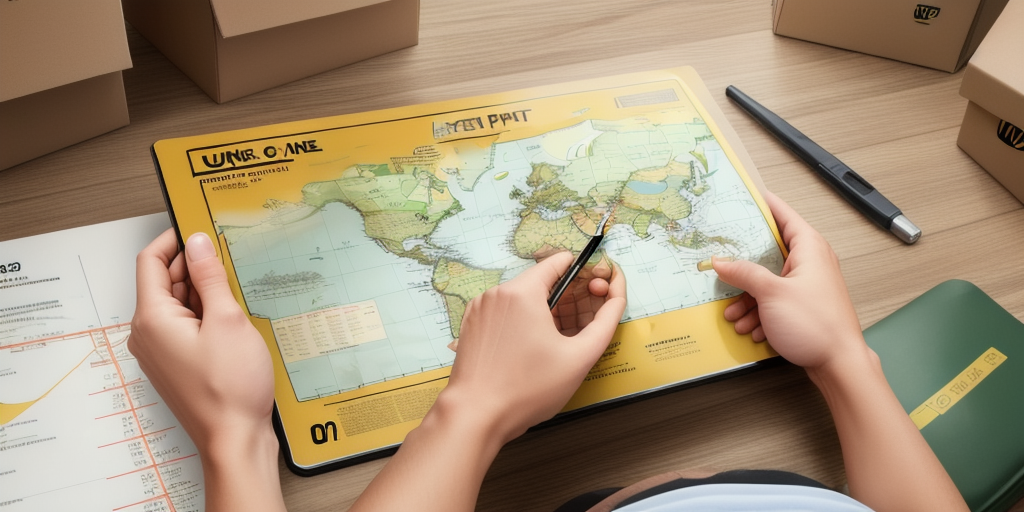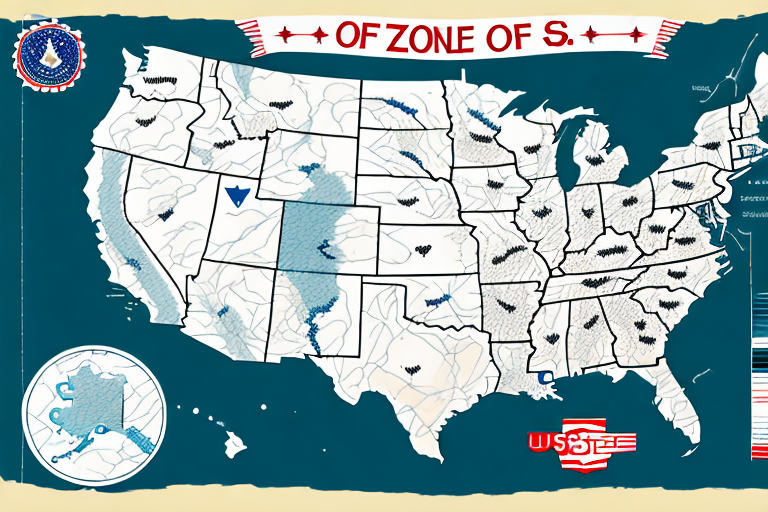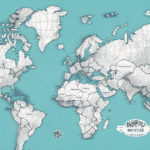What are UPS Zones?
UPS Zones are geographical areas defined by the United Parcel Service (UPS) to determine shipping costs based on the distance between the shipment's origin and destination. The United States is divided into multiple zones, typically ranging from Zone 1 to Zone 8, with Zone 1 being the closest to the origin and Zone 8 being the farthest. Understanding these zones is essential for businesses and individuals looking to optimize their shipping strategies and manage costs effectively.
Each zone corresponds to a specific range of distances, and the shipping rates increase as the zones move further away from the origin point. This zonal system allows UPS to provide a structured pricing model that reflects the varying costs associated with transporting packages across different distances.
How UPS Zones are Determined
UPS employs a systematic method to assign zones based on the distance between the shipper’s location and the destination ZIP code. The primary factors influencing zone determination include:
- Distance: The geographical distance between the origin and destination plays a significant role in zone classification.
- Transportation Routes: UPS considers the most efficient transportation routes and logistics networks when determining zones.
- Delivery Networks: The existing delivery infrastructure and networks impact how zones are delineated to optimize delivery efficiency.
For example, shipping a package from Los Angeles, CA to San Francisco, CA might fall into Zone 3, whereas shipping the same package to New York, NY could be in Zone 6. It's important to note that UPS regularly reviews and updates its zone assignments to reflect changes in transportation routes and delivery networks.
Importance of Understanding UPS Zones
Grasping the concept of UPS Zones is crucial for several reasons:
- Cost Management: Shipping costs are directly influenced by the zone of the destination. By understanding zones, businesses can better forecast and manage their shipping expenses.
- Delivery Planning: Knowing the zones helps in estimating delivery times, ensuring that shipments arrive within the desired timeframe.
- Supply Chain Optimization: Analyzing zone-related data can aid in enhancing logistics strategies, leading to more efficient supply chain operations.
For businesses, particularly those engaged in e-commerce, leveraging UPS Zones can lead to significant cost savings and improved customer satisfaction through timely deliveries.
Utilizing the UPS Zone Map
The UPS Zone Map is a valuable tool that simplifies the process of determining shipping zones. Accessible through the official UPS website, the Zone Map allows users to input origin and destination ZIP codes to identify the corresponding UPS Zone.
Using the UPS Zone Map, users can quickly ascertain the zone classification for any shipment, facilitating accurate cost estimation and strategic shipping decisions.
Additionally, the UPS Zone Locator tool provides interactive features that enhance user experience, making it easier to navigate and utilize the Zone Map effectively.
Calculating Shipping Costs with the UPS Zone Map
Once the UPS Zone is identified, it serves as a foundation for calculating the shipping costs. UPS's shipping calculator integrates zone information to provide precise cost estimates based on several factors:
- Package Weight and Dimensions: Heavier and larger packages incur higher shipping fees.
- Shipping Speed: Faster shipping options, such as overnight or two-day delivery, come at a premium compared to standard shipping methods.
- Service Type: Various UPS services, including Ground, Air, and Freight, have different pricing structures influenced by zone classifications.
For accurate cost calculations, users can utilize the UPS Shipping Calculator, which incorporates the latest zone data to provide reliable estimates.
Strategies to Save on Shipping Costs
Implementing strategic approaches can lead to substantial savings when shipping packages through UPS:
- Zone Consolidation: Combining multiple shipments destined for the same zone can reduce overall shipping costs.
- Flat Rate Shipping: Utilizing UPS’s flat rate boxes allows for predictable shipping costs, especially for heavier items.
- Off-Peak Shipping: Scheduling shipments during non-peak periods can result in lower shipping rates.
Additionally, businesses can negotiate volume-based discounts with UPS or explore UPS's business pricing options to further optimize shipping expenses.
Efficient Shipping Strategies for Different UPS Zones
To maximize efficiency when shipping across various UPS Zones, consider the following strategies:
- Route Optimization: Plan shipping routes that minimize the number of zones traversed, thereby reducing costs and delivery times.
- Automated Shipping Software: Employ UPS’s shipping software to automate label generation, cost calculations, and route planning, minimizing errors and saving time.
- Real-Time Tracking: Utilize UPS’s tracking services to monitor shipments, ensuring timely deliveries and enhancing customer satisfaction.
Implementing these strategies not only enhances operational efficiency but also contributes to a streamlined and cost-effective shipping process.
Common Mistakes and Best Practices
Avoiding common pitfalls can significantly improve shipping efficiency and cost-effectiveness:
- Ignoring Residential Surcharges: Failing to account for residential delivery fees can lead to unexpected expenses. Always verify whether the destination is a residential address and include any applicable surcharges in your cost calculations.
- Outdated Zone Information: Shipping based on outdated zone data can result in inaccurate cost estimations. Regularly consult the UPS Zone Map to ensure you have the latest information.
- Neglecting Package Specifications: Overlooking package weight and dimensions can lead to incorrect shipping charges. Always provide accurate package details when calculating costs.
Adhering to best practices, such as regularly updating zone information and accurately inputting package details, can enhance shipping accuracy and cost management.
Additional Resources
For more information on UPS Zones and shipping strategies, consider exploring the following reputable sources:
- UPS Shipping Services
- UPS Resources and Tools
- UPS Help Center
- FedEx Shipping Zones (for comparison)
Leveraging these resources can provide deeper insights and assist in making informed shipping decisions.




















